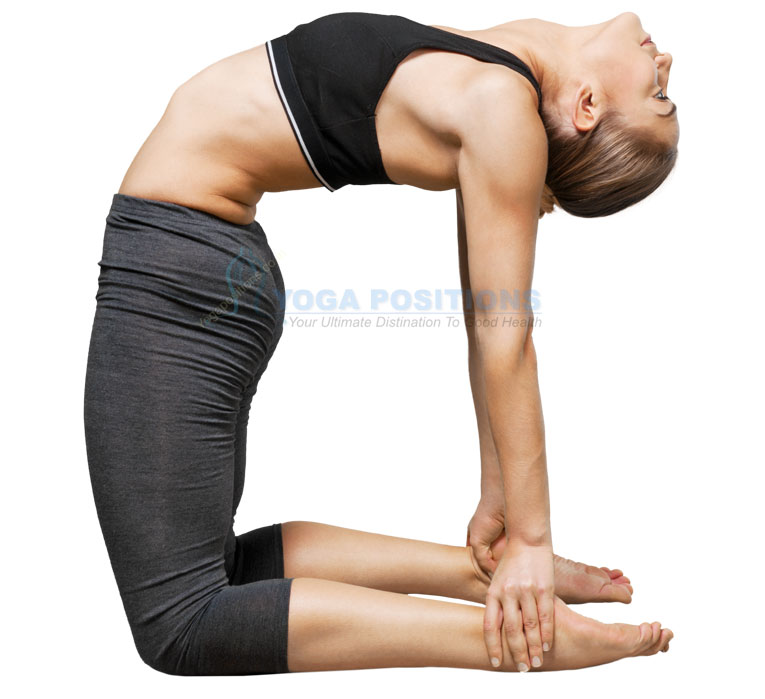2K
Ustrasana yoga: The body of the yogic practitioner in this asana will resemble that of a camel, hence the name. The Sanskrit term ‘Ustra’ means camel.

Methodology of Ustrasana yoga
- Kneel down.
- The knees will have to be kept at shoulder-width.
- Keep your toes eight inches apart.
- Only your toes and knees will be having contact with the floor.
- Move the posterior between the heels.
- Sit comfortably.
- Catch hold of the heels with the hands.
- Press with your palms the heels.
- Exhale five times in quick succession.
- Slowly inhale even as you raise your posterior from the heels.
- Come up on your knees and toes.
- Pull back your shoulders.
- Push forward the hips.
- Exhale and raise your chest even as you bend backwards to the farthest limit your head and trunk.
- Curve backwards the spine.
- Look up.
- Complete the exhalation.
- Take five deep breaths.
- Invert the feet.
- Place your toes and the upper portions of your feet on the ground.
- Slide down the hands and catch hold of the ankles.
- Further band backwards.
- Arch the neck and the spine and make a curvature of your body.
- Breathe deeply and rhythmically.
- Stay in posture till you start feeling the strain.
- Gradually return to the kneeling posture.
- Now assume the sitting position.
- Stretch out the legs and relax.
- Do this exercise once.

Advantages of Ustrasana yoga
- The ribcage and the lungs get expanded. The ribcage also develops.
- The diaphragm elasticity is boosted.
- The tone of the spinal muscles and nerves improves.
- The deep muscles of the face, neck, trunk and thighs is improved.
- The spinal lumbar region becomes flexible due to the alternate flexion and extension movements.
